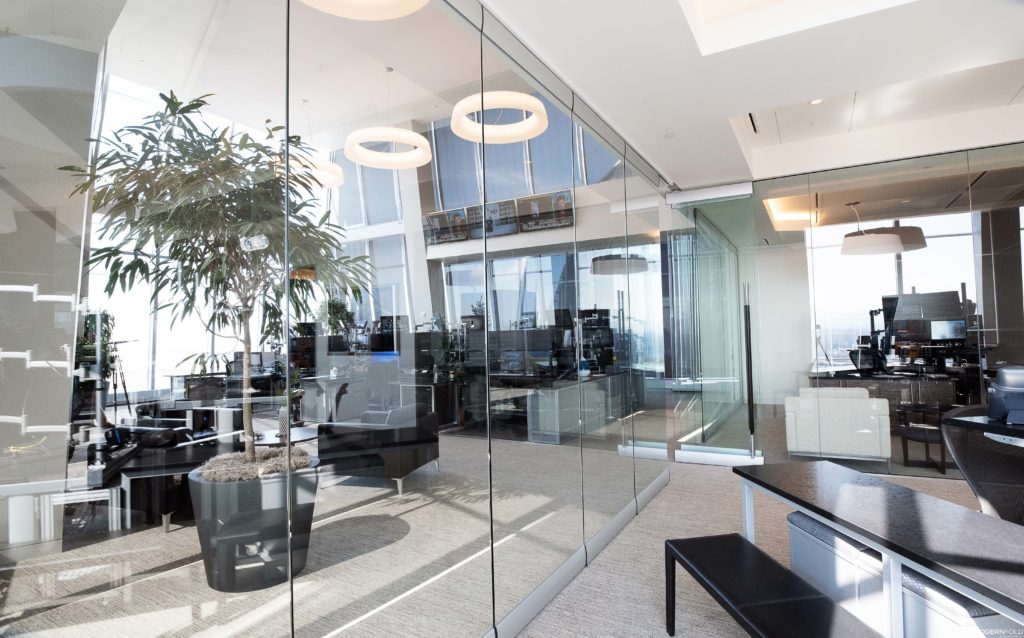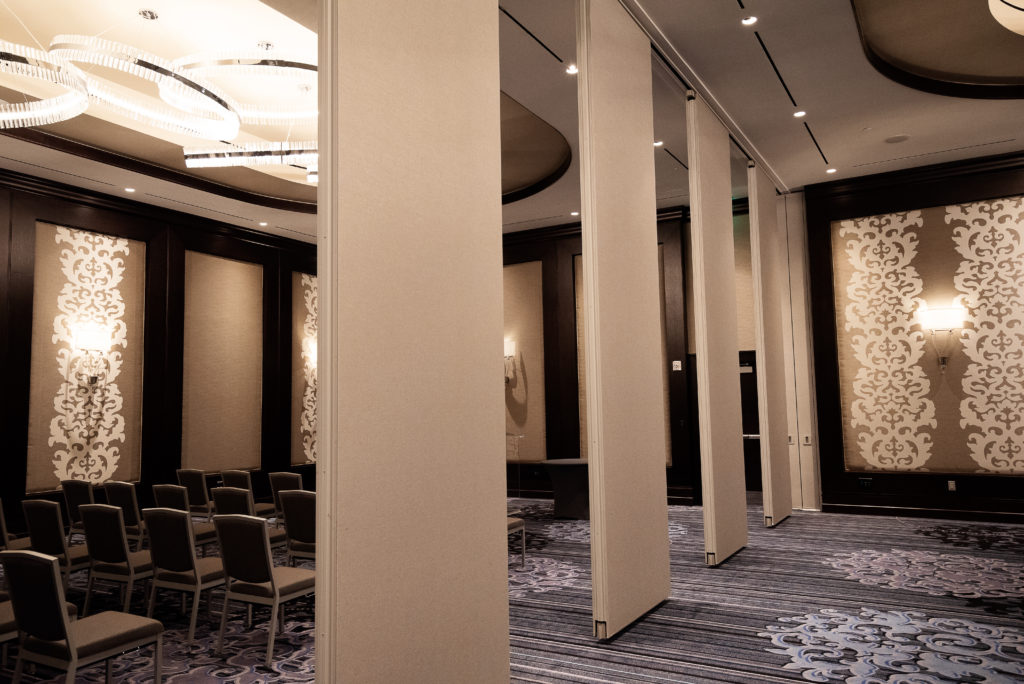The Benefits of Automating Space Management Solutions
Why Automation??


Generally speaking, operable space management solutions are used for the flexibility achieved when the closed element stacks or stores and opens the floor plan. The level of flexibility is greatly increased when this operation is automated. Products across industries, types, functions are all moving toward increased automation due to the intrinsic value automating each product provides. Lights activate when a room is occupied, security systems call the police when intrusion is detected, cars automatically hit the brakes if the car in front does the same. The goal of all technology is to improve quality of life and make things easier/safer/faster!

With those improvements in mind, we will explore the added value automation brings to horizontally acting and vertically acting space management solutions!
Ease of Use

To quote Bryan Welch, President of Modernfold, “the most expensive operable partition is the one that never leaves the pocket”. Space management solutions are meant to be used to maximize the value their original investment represents. If the product is deemed to be too heavy, cumbersome, or technical to move, then all the flexibility the solution is supposed to provide goes out the window. When automatic operation is utilized, and operation is as simple as pushing a button, the frequency of usage will skyrocket, resulting the investment giving its desired return. Without automation, the return is at risk and relative to how easy the end user believes the product is to operate. Remove the potential barrier, and let automation put the solution to work!
Full Employee Access

Space management products are usually heavy: from insulated glass to sound rated panels, the product weight can limit who can feasibly and safely operate. All employees will be able to walk up and push a button to operate, expanding the potential users of the solution facility wide, instead of a small team of big, muscular individuals.
Quicker Setup
Time is money, and paid employees time goes into the cost of owning an operable partition on top of the cost of original investment. Manually operated products work fine on smaller openings, however, the larger and more complicated the products get, the more time will need to be invested to operate.

A practical way to think about the benefit of automation when it comes to employee time: at what point is the owner paying more for operation hours vs. the original cost difference between a manual and automated system. In our experience, to go from manual to automated is on average a 30% increase over cost to 100% increase depending on the level of technology and options included.
To work through an example: a manual partition cost $50,000, its automated counter part would be a $15,000 to $50,000 premium on the initial investment to pay for the upgrade. The expected use in this example is one set up, five days per week, every week of the year, or 240 set ups per year taking about an hour to set up and take down. The employee tasked to set it up is paid $45 per hour (with benefits included) or $10,800 per year for the set up/take down operation, paying for the low end of the premium in less than 1.5 years.
The equation for every owner is not the same, but the need to quantify employee time will always be a good exercise to look at what is often a forgotten hidden cost of manual space management solutions!
Prevents Damage

Automated operation removed the human factor, setting up the partition or door without the risk of damage from mis-use. In addition, they can be configured with sensors that prevent the accidental collision with objects left in the path of operation, like tables and chairs.
Big moving panels, or door sections, under manual operation are always susceptible to an over-zealous operator: people move panels too fast, leave tables in the path of operation, hit surrounding walls, and accidentally over tilt panels so they hit ceiling and floor finishes.
Correct Setup Every-Time

Back to the human factor, manual space management products many times come with manually deploying seals, conjoining and linking mechanisms, and generally several steps that lead to proper set up and take down. Forgetting one of these steps could cause sound leakage issues (i.e. a bottom seal not being cranked down leaving a big gap under the panel), a product to be susceptible to moving (i.e. foot bolts on a glass wall not being engaged, allowing it to swing), among many other scenarios. On top of that, parts can be damaged if not properly disengaged: bottom seals regularly get damaged by being dragged across the room when down and pressed into the floor, foot bolts get bent or shear off, and crank mechanisms are sometimes broken if the owner is over-zealous while operating the crank handle, destroying the internal turning mechanisms.
Automation again is engineered to help with this, setting up all components as designed corrected every time. No memory required, no forgetting, and no damage – you get the same sound control and reliable performance each setup/take down.
Easier Training

Knowledge is key when operating the big, heavy space management solutions we offer. An inexperienced operator can cause the damage mentioned before, or worse, hurt themselves or another employee. As a result, regular training of personnel on how to properly use a manual system is key, especially in locations where turnover is prevalent.
Automation simplifies the training process: instead of learning all the steps and intricacies of set up, training consists of how to push a button and get out of the way. Another example of a time and cost saving value!
Safe Operation
Injury is a very real possibility with manual space management solutions. Operable partitions panels, weighing hundreds of pounds roll through their tracks and can hit someone else if the person moving them is not mindful, pin themselves or others against surrounding construction or furniture. Pinching fingers or hands can be another issue when two hinged panels flatten or two ends of panels seat together when closing. Vertical lifting doors can be pulled down too quickly, or can be pulled down on a non-suspecting patron by an employee who may not be paying attention. Even worse, what happens in an elementary school if the kids decide to play with huge 14′ tall operable partition panels when teachers may be distracted? Or at a restaurant with exterior folding glass panels sitting near a bar where excited patrons may have had a little too much to drink and start playing with operation. All are potentially costly issues for any facility to have to work through.


Safety sensors, weight mats, wireless edges, light curtains, and pressure sensitive motors are all available to protect employees and visitors from a moving automated partition or door. Also, key stations with removable keys and touch pads with pass codes are an easy way to prevent unwanted users of an operable product from operating.
Time to Automate!
Overall, the technology associates with automating space management solutions does come with added initial investment. Like all investments, product product operation enhancements must be evaluated on life cycle costs and value. The value automation represents during the product’s full life cycle that automation represents is highly undervalued in our industry, and we can really help our owners and customers if we simply explain instead of “value engineering” down to a manual system, look at the ownership costs associated with the manual system, and it will not be the best value.
Back to Latest News


